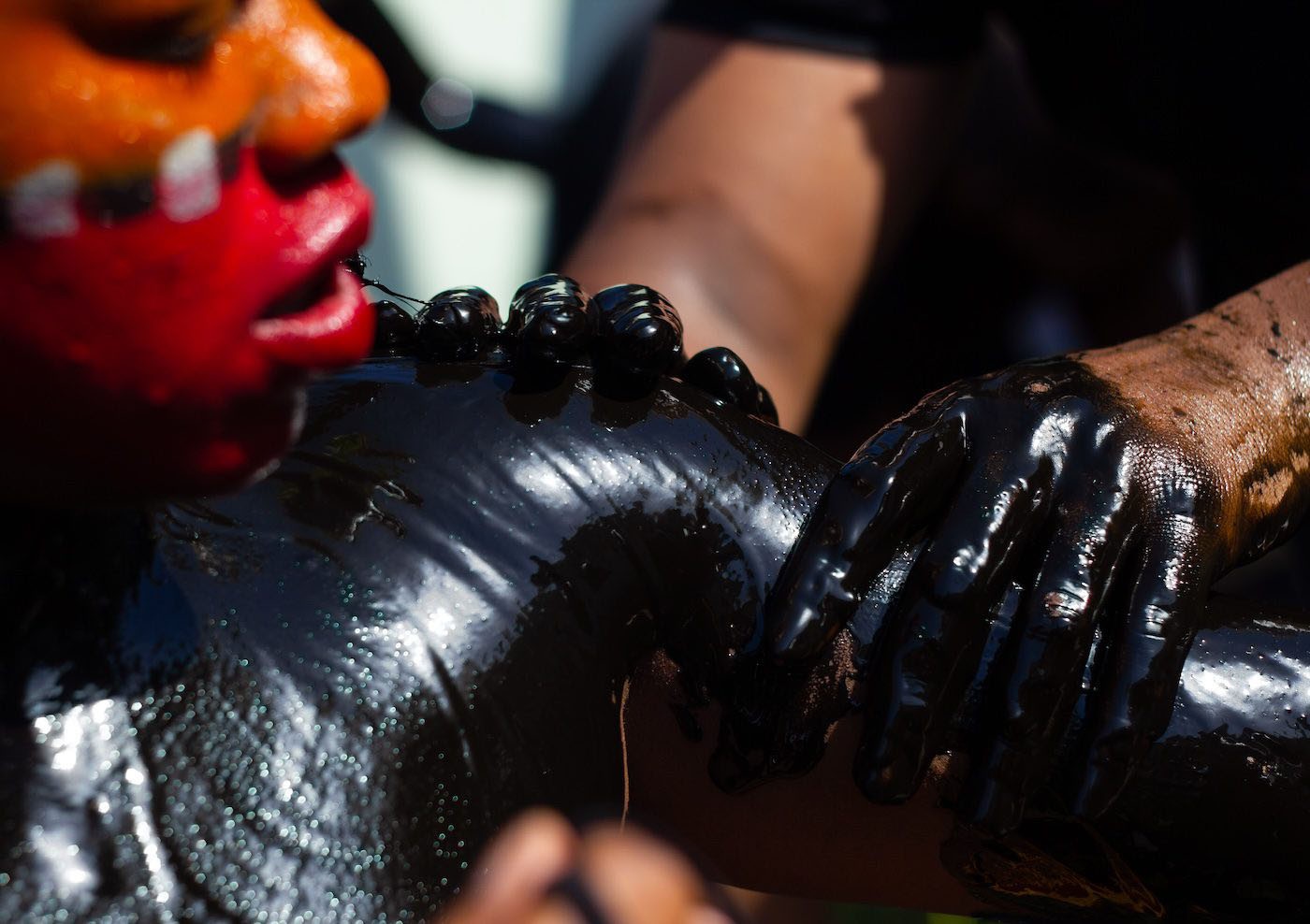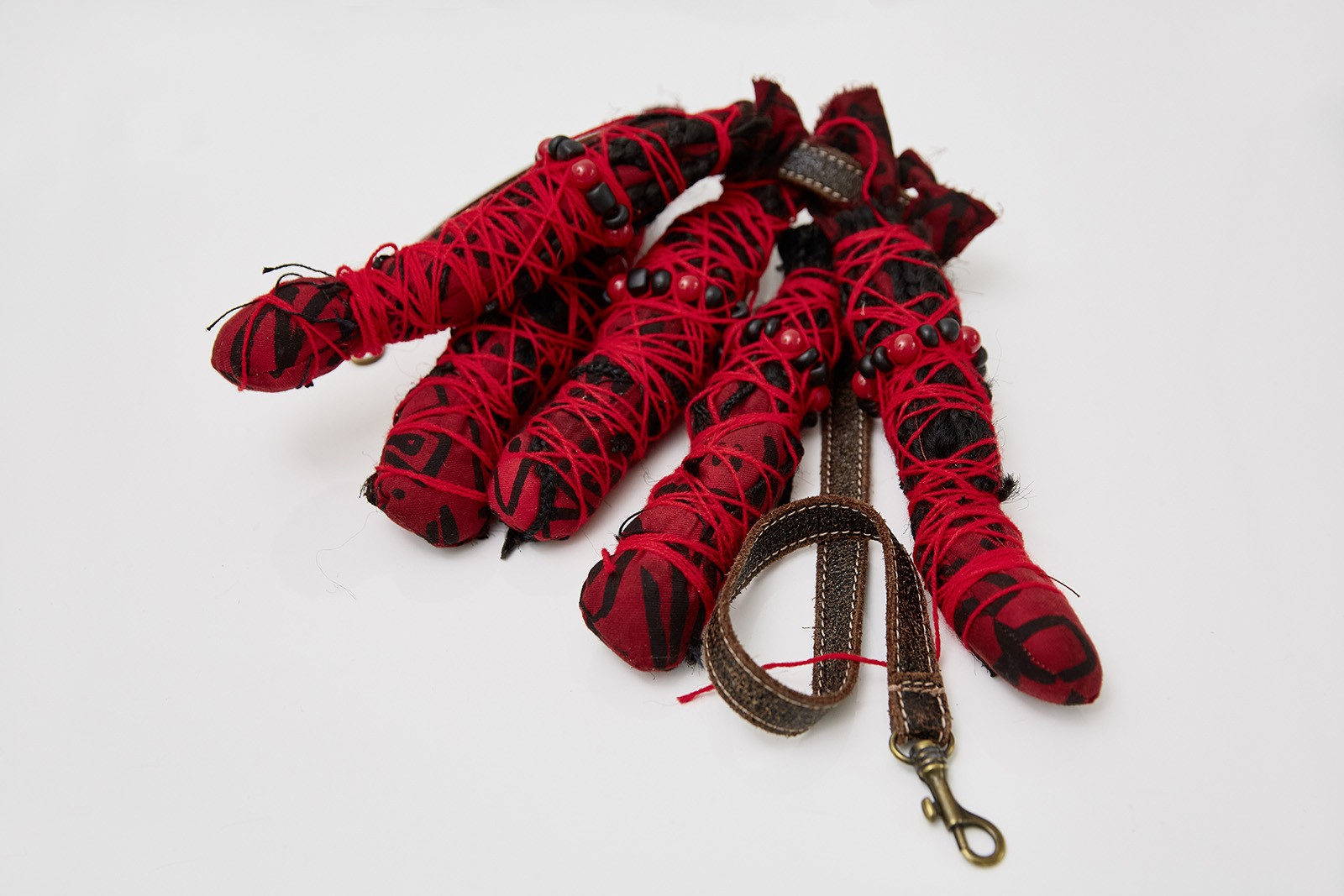Exploring the Body as Colonial Occupation
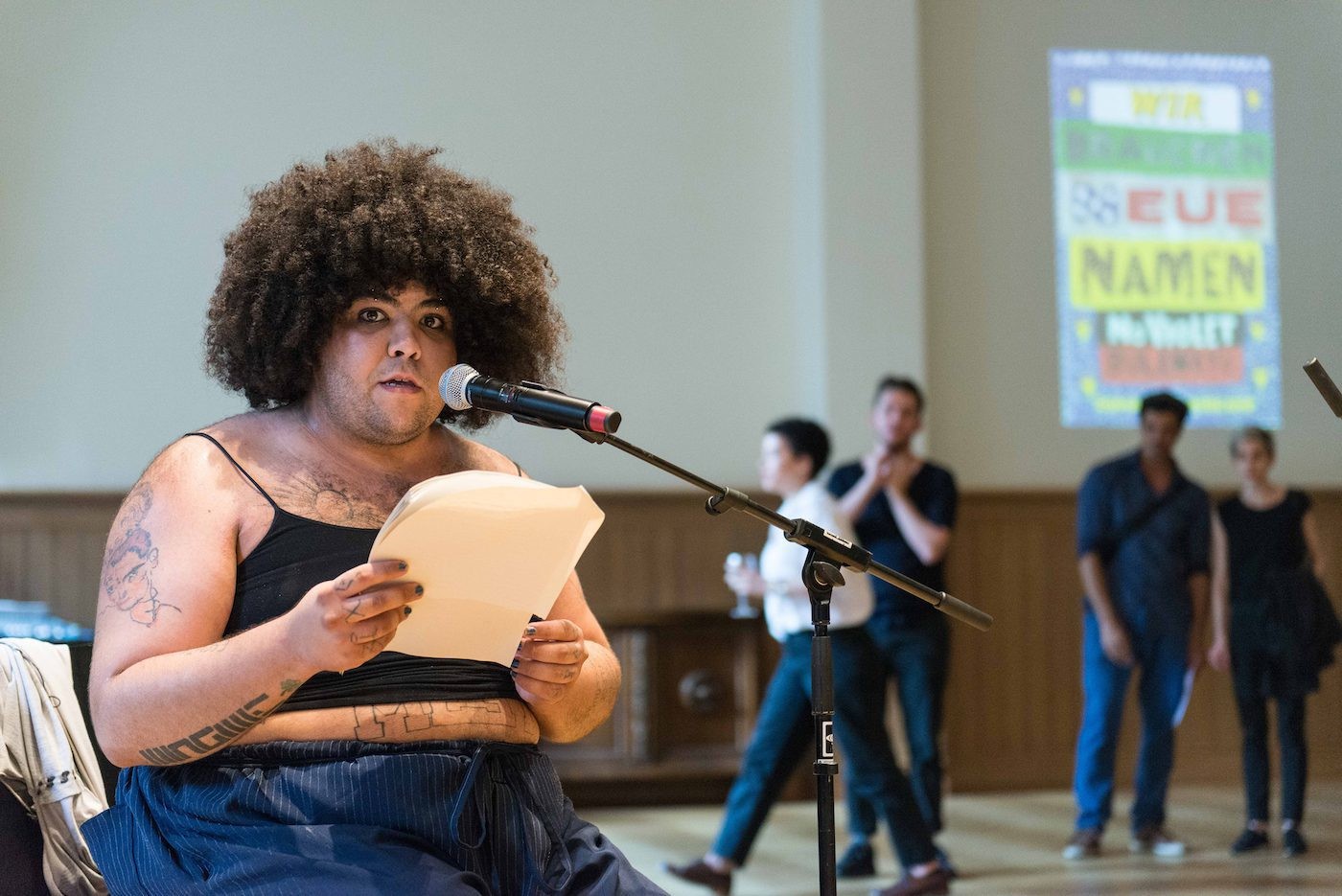
10 March 2018
Magazine C& Magazine
5 min read
Contemporary And (C&): How did you move from writing to performance? And how do they come together? Jota Mombaça: I think my writing has influenced my performance and vice versa. There are several topics in common between my work as a writer and my work as performer, such as coloniality, embodied struggles, global violence, politics …
Contemporary And (C&): How did you move from writing to performance? And how do they come together?
Jota Mombaça: I think my writing has influenced my performance and vice versa. There are several topics in common between my work as a writer and my work as performer, such as coloniality, embodied struggles, global violence, politics of opacity, and so on. For instance, in my last piece, titled Nãovão, which consists of a series of bloody white flags with small sentences or conceptual formulas written in blood, the writing becomes a crucial element of the work – along with the performative procedure of deploying my own blood to blur the hegemonic accounts of peace, harmony, and political truce symbolized by the white flag. It’s curious because writing and performance come together precisely when I’m not exactly making a performance or a text, but creating some sort of installation, object, or whatever. So you can see that the point here is: how could we pass through those languages and strategies, without choosing anything to affiliate with? Maybe, considering your question, the word that I am most connected with is “move”, as if my work should not be read as writing or performance, but as some sort of “moving”. The moving of my wound towards the world; the moving of my body in spite of borders; the moving of my writing towards counter-legibility. That is what I’ve been trying to activate through writing and performative work.
C&: In many of your performances you use your body, and often the naked body. Why is that important to your practice?
JM: Performance in my case is always already a move towards my own body. It is an attempt to fight back against the violent occupation of it by various colonial, heteronormative, racist, and cis-supremacist forces. I started to work with performance because I wanted to become a body and I wanted to be able to say that “my body is mine.” But what I discovered through performance was that, in the end, in order to become a body I would have to come into a battle against the body, or to be more precise: against the embodied grammars of power that (re)produce the body as a disembodied object of political regulation. In 2013, for instance, I did a performance called Corpo-Colônia (Body-Colony) in which a friend of mine, Patrícia Tobias or Vendaval Caprichosa, used a shovel to toss gravel from a heap onto my naked body. I also was reading a text of mine about this notion of body as colonial occupation. I remembered this performance instantly because it was the first time that I saw images of my naked body and felt proud about it. Maybe it was just because I had some new tattoos... But nah!
I really think it was because somehow I felt that day that, no matter how, I had decided to fight against the coloniality that I was holding within my body. And even if this struggle cannot be overcome, as it is mostly frustrating, contradictory, complicated, and self-destructive, it is however a struggle that is worth fighting.
C&: That also goes for the use of your own blood. In which performances and circumstances have you done that?
JM: Firstly, I believe it is important to explain where the blood reference in my performative work comes from. It’s related to Jota Medeiros, a poet, visual artist, and art theorist from my hometown (Natal, Brazil). I started performing with my blood in 2013 when I was studying his work and discovered a performance from the 1980s in which he slit his finger to write a poem with blood. I attempted to re-enact this performance, called Autopoema, but I didn’t have enough material to know exactly how the performance was carried out. So I decided to puncture my fingers with needles to write with the blood following the only archive of the work I had access to. It was published in a local art magazine with a photo and a short press release. Thinking about the lack of archives as an index of the erasure of the northeastern region in the history of contemporary art in Brazil, I used the blood to write Memória Fraca (Bad Memory) in that page of the magazine. After that, I started to deploy my blood in a series of works called A Ferida Colonial Ainda Dói (The Colonial Wound Still Hurts), in which I intervene in iconic maps, magazines, books, and places, using my blood to write or draw or simply underline discourses and representations that reinforce coloniality as a never-ending system of oppression and reproduction of war. And finally, in my recent aforementioned piece, Nãovão, my blood appears again as a critical element to reflect upon the violence contained in hegemonic accounts of peace, harmony, and social order.
Interview by Will Furtado.
This Interview was first published in our latest Print Issue #8. Read the full magazinhere.
Read more from

Confronting the Absence of Latin America in Conversations on African Diasporic Art

On Exile, Amulets and Circadian Rhythms: Practising Data Healing across Timezones
Read more from
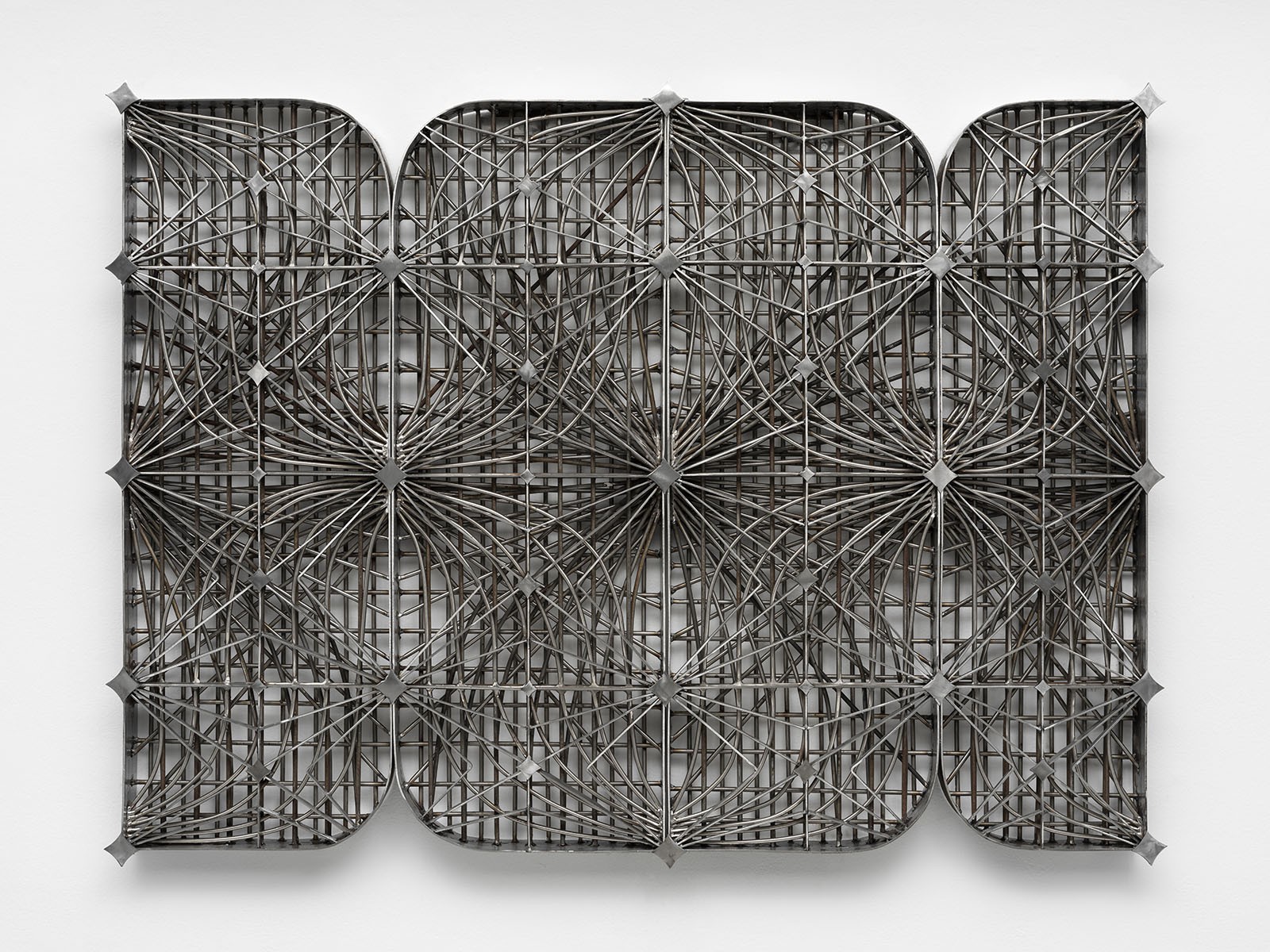
Jesús Hilário-Reyes: Dissolving Notions of Group and Individual
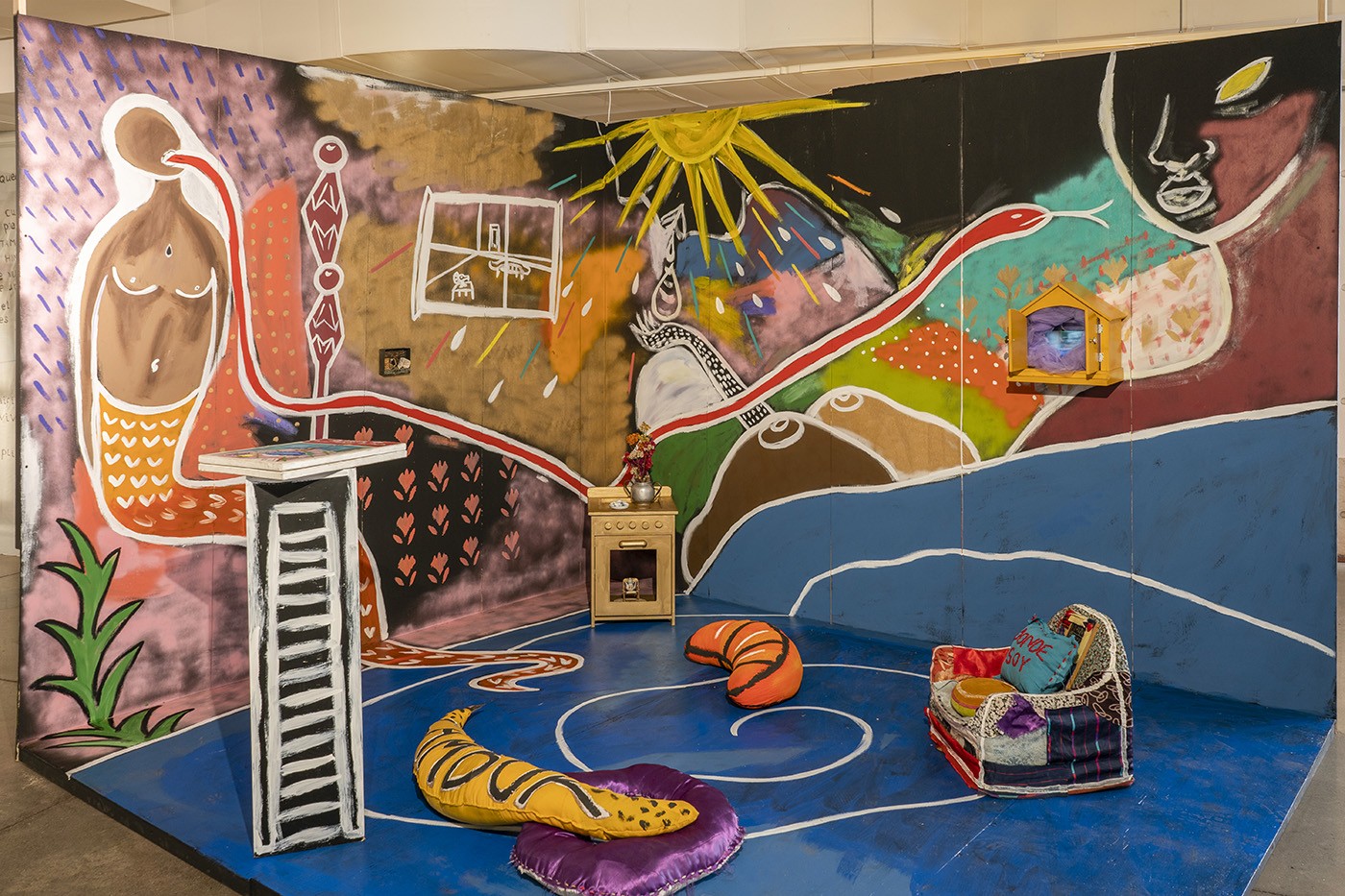
A Biennial that relates sound to space and bodies
